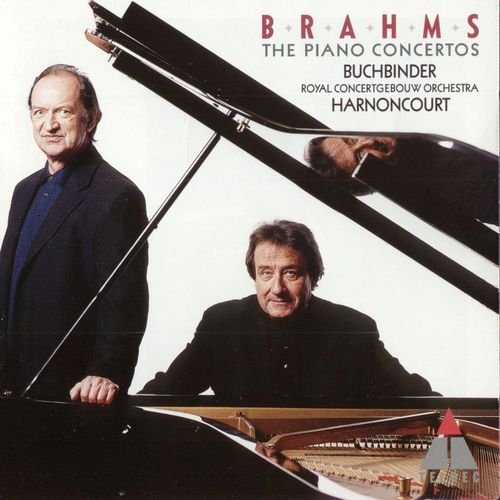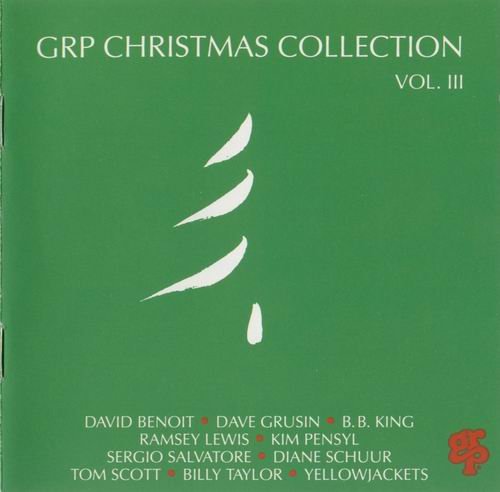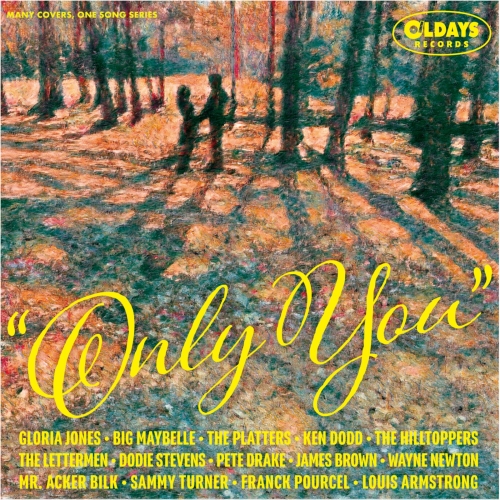Rudolf Buchbinder, Nikolaus Harnoncourt - Brahms - Piano Concertos (2000)

Artist: Rudolf Buchbinder, Nikolaus Harnoncourt
Title: Brahms - Piano Concertos
Year Of Release: 2000
Label: Teldec
Genre: Classical
Quality: FLAC (image+.cue,log,scans)
Total Time: 49:42 + 46:52
Total Size: 427 Mb
WebSite: Album Preview
Tracklist: Title: Brahms - Piano Concertos
Year Of Release: 2000
Label: Teldec
Genre: Classical
Quality: FLAC (image+.cue,log,scans)
Total Time: 49:42 + 46:52
Total Size: 427 Mb
WebSite: Album Preview
CD 1:
Piano Concerto No. 1 in D minor, op. 15
1. Maestoso
2. Adagio
3. Rondo: Allegro non troppo
CD 2:
Piano Concerto No. 2 in B flat major, Op. 83
1. Allegro non troppo
2. Allegro appassionato
3. Andante
4. Allegretto grazioso
Performers:
Rudolf Buchbinder, piano
Royal Concertgebouw Orchestra
Conductor: Nikolaus Harnoncourt
Few musical partnerships have elicited such divergent critical opinions as Maurizio Pollini and Claudio Abbado in Brahms’s two piano concertos. Reviewing the First Concerto in April 1999, Richard Osborne found ‘a lack of quickness and intelligence in the inner-part playing’ while missing ‘any real sense of interaction between soloist and orchestra’. A year earlier Bryce Morrison, in his review of the Second Concerto, had found it ‘impossible to think of them apart, their unity [here] is so indissoluble’. BM also praised what he heard as ‘a granitic reading stripped of all surplus gesture, preening mannerism or overt display, intent only on the unveiling of a musical or moral truth’.
My own response to the First Concerto inclines rather more to BM’s viewpoint. What strikes me most forcibly about the first movement is its upright posture and a clear-headed understanding of Brahms’s architecture. The central episodes are never allowed to flag and the energised but relatively cool outer sections (note the balmy woodwinds from 7'16'') further serve to accentuate crucial developmental arguments. If you need evidence of how well Pollini and Abbado ‘connect’, beam up 6'11'' into the finale, where repeated notes dive headlong into the upcoming tutti.
The ‘interaction’ between performing factions seems to me consistently watertight, though it’s easy to understand how Pollini’s naturalness can be misconstrued as matter- of-factness. Not all the time, though. The celebrated octave passage at 10'09'' into the first movement is the stuff of real fury, and so is the soloist’s impulsive assumption of the finale’s principal theme (at 6'50''). Abbado’s affection for this music lends a heightened sensitivity to the passage at 3'49'' into the finale’s string-led second subject, which is most beautifully phrased.
Like Pollini and Abbado, Rudolf Buchbinder and Nikolaus Harnoncourt made their live recordings in reverse order, the First Concerto dating from October 1999, the Second from December 1998. As on DG, the solo piano image is fairly close-set (though the actual tone is brighter), but while DG allows almost no evidence of a live audience, either the Amsterdam audiences were noisier or Teldec made fewer efforts to edit them out.
The First Concerto is broader than Pollini’s by near-on five minutes, most of the extra time being held in the first movement. Harnoncourt’s rock-steady opening tutti favours prominent wind lines and his orchestral layout – divided violin desks, centre-placed cellos, basses ranged to the left of the spectrum – makes for extra clarity. Of the two soloists, Buchbinder is the more overtly romantic player, more prone to indulge in heightened dynamics, tenutos or rubatos. I did sometimes wonder about the partnership with Harnoncourt, especially in the Adagio where, after a limpid, chorale-like opening (quite unlike any other on disc, with bassoons brought clearly to the fore) Buchbinder’s expressive elasticity – though quite lovely in its own right – hints at another world entirely. Abbado’s preparation is more heavily biased towards the strings, and yet Pollini’s response could have suited either conductor.
The finale’s songful second set finds Buchbinder sporting a light, staccato accompaniment (1'27''), but I wasn’t entirely sure about the way Harnoncourt slows for the movement’s middle section (at 3'53'', the passage where Abbado is so singularly effective), though the ensuing fugato (5'12'') benefits from the divided string desks. Viewed overall, Buchbinder and Harnoncourt are big on detail and the ‘grand gesture’, but their first movement tends to hang fire. Pollini and Abbado hold the reins more tightly, allowing us greater appreciation of what was surely Brahms’s Beethovenian heritage.
DG’s Berlin Philharmonic recording of the Second Concerto is oppressively close (the marginally airier First was set down at the Vienna Musikverein), so much so that a good deal of orchestral detail is swamped by the piano. But I like the performance’s swagger, shapeliness and square-jaw resolve. There’s never a hint of ugliness or strain about the playing and yet Pollini maintains an essential sense of struggle – not in technical terms, but in the way he flexes his muscles among Brahms’s thickened textures. The first movement is fairly relentless and the second strikes a balance between raw defiance and wistfulness. I’d second BM’s assessment of the Adagio’s ‘stillness’ and the finale’s ‘tensile strength’, adding that in both concertos I would choose Pollini’s later recordings over his previous studio efforts, also on DG.
As in the First Concerto, Harnoncourt liberates various aspects of Brahms’s scoring (again, bassoons are a prominent feature, ie at 6'34'' into the first movement) and is meticulous in his handling of differing note values. In a sense, Buchbinder and Harnoncourt extend our knowledge of the piece where Pollini and Abbado offer a superior slant on what we already knew. Furthermore, where DG’s production is rather ‘in your face’, Teldec’s has clearer perspectives.
The principal draw here is in the way internal lines are clarified and interconnecting phrases shaped. Tempos are marginally faster than Abbado’s (46'52'' to compare with 48'37'') but a sense of drive makes them sound quicker still, and the exciting alternation of first and second violins at 3'06'' is heightened by Harnoncourt’s antiphonal layout. The second movement is more a tripping, hot-foot scherzo than appassionato, with lightly cuffed accents and an almost Handelian account of the exultant central tutti. True, there’s a slightly awkward pause just prior to the surging solo passage at 5'24'' but thereafter Buchbinder’s varieties of touch and phrasing – staccato, arpeggio, etc – add significant flavour to the mix. The Andante is fluid and warmly blended, though in the ‘still centre’ Buchbinder doesn’t quite match the tender cushioning of Harnoncourt’s accompaniment.
The finale’s gentle grazioso opening soon frisks to high-octane action. Buchbinder’s chords have a stinging impact and although he has his work cut out keeping up towards the end of the work (where speeds are pretty nifty), he manages – just about – and the effect is exhilarating.
It will by now be fairly obvious that I rather prefer Buchbinder’s Second Concerto to his First, though both performances are rich in novel points of detail. Pollini and Abbado offer fewer surprises but a more consistent interpretative front.
Individual alternative recommendations are plentiful. I still hold Rubinstein’s poised first recording of the First Concerto (under Reiner) in high regard, though Kovacevich (under Sawallisch) provides a sensitive and sometimes daring digital option. Gilels’s B flat is at its most dynamic under Reiner (RCA, nla) but the broader re-make with Jochum has much to commend it and I would thoroughly support RO’s enthusiasm for Anda (with Fricsay conducting). As to rival ‘double-packs’, Abbado with Brendel is consistently full of insight (the partnership with Pollini is more militant) and I would draw special attention to Leon Fleisher with the Cleveland Orchestra, a strong, clear-headed option, magnificently played and in fine 1960s sound.
My own response to the First Concerto inclines rather more to BM’s viewpoint. What strikes me most forcibly about the first movement is its upright posture and a clear-headed understanding of Brahms’s architecture. The central episodes are never allowed to flag and the energised but relatively cool outer sections (note the balmy woodwinds from 7'16'') further serve to accentuate crucial developmental arguments. If you need evidence of how well Pollini and Abbado ‘connect’, beam up 6'11'' into the finale, where repeated notes dive headlong into the upcoming tutti.
The ‘interaction’ between performing factions seems to me consistently watertight, though it’s easy to understand how Pollini’s naturalness can be misconstrued as matter- of-factness. Not all the time, though. The celebrated octave passage at 10'09'' into the first movement is the stuff of real fury, and so is the soloist’s impulsive assumption of the finale’s principal theme (at 6'50''). Abbado’s affection for this music lends a heightened sensitivity to the passage at 3'49'' into the finale’s string-led second subject, which is most beautifully phrased.
Like Pollini and Abbado, Rudolf Buchbinder and Nikolaus Harnoncourt made their live recordings in reverse order, the First Concerto dating from October 1999, the Second from December 1998. As on DG, the solo piano image is fairly close-set (though the actual tone is brighter), but while DG allows almost no evidence of a live audience, either the Amsterdam audiences were noisier or Teldec made fewer efforts to edit them out.
The First Concerto is broader than Pollini’s by near-on five minutes, most of the extra time being held in the first movement. Harnoncourt’s rock-steady opening tutti favours prominent wind lines and his orchestral layout – divided violin desks, centre-placed cellos, basses ranged to the left of the spectrum – makes for extra clarity. Of the two soloists, Buchbinder is the more overtly romantic player, more prone to indulge in heightened dynamics, tenutos or rubatos. I did sometimes wonder about the partnership with Harnoncourt, especially in the Adagio where, after a limpid, chorale-like opening (quite unlike any other on disc, with bassoons brought clearly to the fore) Buchbinder’s expressive elasticity – though quite lovely in its own right – hints at another world entirely. Abbado’s preparation is more heavily biased towards the strings, and yet Pollini’s response could have suited either conductor.
The finale’s songful second set finds Buchbinder sporting a light, staccato accompaniment (1'27''), but I wasn’t entirely sure about the way Harnoncourt slows for the movement’s middle section (at 3'53'', the passage where Abbado is so singularly effective), though the ensuing fugato (5'12'') benefits from the divided string desks. Viewed overall, Buchbinder and Harnoncourt are big on detail and the ‘grand gesture’, but their first movement tends to hang fire. Pollini and Abbado hold the reins more tightly, allowing us greater appreciation of what was surely Brahms’s Beethovenian heritage.
DG’s Berlin Philharmonic recording of the Second Concerto is oppressively close (the marginally airier First was set down at the Vienna Musikverein), so much so that a good deal of orchestral detail is swamped by the piano. But I like the performance’s swagger, shapeliness and square-jaw resolve. There’s never a hint of ugliness or strain about the playing and yet Pollini maintains an essential sense of struggle – not in technical terms, but in the way he flexes his muscles among Brahms’s thickened textures. The first movement is fairly relentless and the second strikes a balance between raw defiance and wistfulness. I’d second BM’s assessment of the Adagio’s ‘stillness’ and the finale’s ‘tensile strength’, adding that in both concertos I would choose Pollini’s later recordings over his previous studio efforts, also on DG.
As in the First Concerto, Harnoncourt liberates various aspects of Brahms’s scoring (again, bassoons are a prominent feature, ie at 6'34'' into the first movement) and is meticulous in his handling of differing note values. In a sense, Buchbinder and Harnoncourt extend our knowledge of the piece where Pollini and Abbado offer a superior slant on what we already knew. Furthermore, where DG’s production is rather ‘in your face’, Teldec’s has clearer perspectives.
The principal draw here is in the way internal lines are clarified and interconnecting phrases shaped. Tempos are marginally faster than Abbado’s (46'52'' to compare with 48'37'') but a sense of drive makes them sound quicker still, and the exciting alternation of first and second violins at 3'06'' is heightened by Harnoncourt’s antiphonal layout. The second movement is more a tripping, hot-foot scherzo than appassionato, with lightly cuffed accents and an almost Handelian account of the exultant central tutti. True, there’s a slightly awkward pause just prior to the surging solo passage at 5'24'' but thereafter Buchbinder’s varieties of touch and phrasing – staccato, arpeggio, etc – add significant flavour to the mix. The Andante is fluid and warmly blended, though in the ‘still centre’ Buchbinder doesn’t quite match the tender cushioning of Harnoncourt’s accompaniment.
The finale’s gentle grazioso opening soon frisks to high-octane action. Buchbinder’s chords have a stinging impact and although he has his work cut out keeping up towards the end of the work (where speeds are pretty nifty), he manages – just about – and the effect is exhilarating.
It will by now be fairly obvious that I rather prefer Buchbinder’s Second Concerto to his First, though both performances are rich in novel points of detail. Pollini and Abbado offer fewer surprises but a more consistent interpretative front.
Individual alternative recommendations are plentiful. I still hold Rubinstein’s poised first recording of the First Concerto (under Reiner) in high regard, though Kovacevich (under Sawallisch) provides a sensitive and sometimes daring digital option. Gilels’s B flat is at its most dynamic under Reiner (RCA, nla) but the broader re-make with Jochum has much to commend it and I would thoroughly support RO’s enthusiasm for Anda (with Fricsay conducting). As to rival ‘double-packs’, Abbado with Brendel is consistently full of insight (the partnership with Pollini is more militant) and I would draw special attention to Leon Fleisher with the Cleveland Orchestra, a strong, clear-headed option, magnificently played and in fine 1960s sound.
DOWNLOAD FROM ISRA.CLOUD
Rudolf Buchbinder Nikolaus Harnoncourt Brahms - Piano Concertos 00 0112.rar - 436.1 MB
Rudolf Buchbinder Nikolaus Harnoncourt Brahms - Piano Concertos 00 0112.rar - 436.1 MB


![Dorothy Donegan - World Recording Sessions 1944/45 (Mono Remastered) (2025) [Hi-Res] Dorothy Donegan - World Recording Sessions 1944/45 (Mono Remastered) (2025) [Hi-Res]](https://www.dibpic.com/uploads/posts/2025-12/1766499237_folder.jpg)





